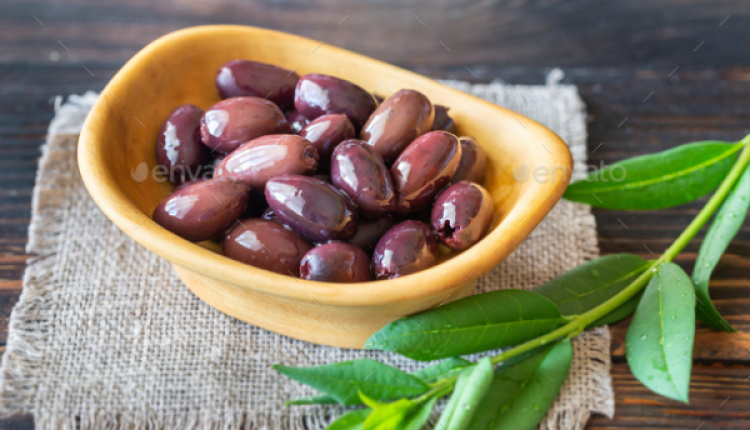Why Kalamata Olives Are One Of The Healthiest Foods On Earth
- by XpatAthens
- Monday, 14 March 2022

Kalamata olives are only found on the Peloponnese peninsula in southern Greece and have played a part in the human diet for thousands of years. Growing under the amazing Greek sun, the olive trees here have much larger leaves than other types of olive trees around the nation and the world and absorb more sunshine.
This dark cherry-sized fruit — yes, the olive is a fruit — that has been used by Greeks for thousands of years not only tastes great, but it also serves up a host of nutritional benefits.
It’s no secret that doctors and dieticians call it one of the healthiest foods on earth and that’s because they are high in sodium, rich in healthy fats, and contain a natural antioxidant.
Kalamata olives contain a range of health-promoting vitamins and minerals and are particularly high in iron and vitamin A. It is said that regular consumption may help lower the risk of cardiovascular disease and various cancers.
History of Kalamata olives
The earliest cultivation of olive trees was probably over five thousand years ago, since Ancient Greek times. Despite being known as ‘Greek black olives,’ they are in fact deep purple in color and compared to green and black olives, they are bigger in size and have plumper, oblong shape.
Growers pick these Kalamata olives by hand to avoid bruising the fruit. Following the harvesting of the olives, workers either process them into olive oil or prepare them to be table olives.
Kalamata olives contain a stone in the middle, and generally, they are not pitted before being sold. However, when fresh the olives are incredibly bitter, and so they enter a process of ‘debittering.’
General Nutrition of Kalamata Olives
Kalamata olives are a good source of fiber, calcium, vitamin C, vitamin A, vitamin E, and vitamin K. They also provide some magnesium, phosphorous, and potassium per serving as well as B vitamins.
While Kalamata olives are high in fat considering their serving size, the majority of their fat is monounsaturated, also known as a “healthy” fat. It is said a 4-tablespoon serving of Kalamata olives has 2.7 grams of monounsaturated fats and 0.3 grams of polyunsaturated fats.
To read this article in full, please visit: greekcitytimes.com
This dark cherry-sized fruit — yes, the olive is a fruit — that has been used by Greeks for thousands of years not only tastes great, but it also serves up a host of nutritional benefits.
It’s no secret that doctors and dieticians call it one of the healthiest foods on earth and that’s because they are high in sodium, rich in healthy fats, and contain a natural antioxidant.
Kalamata olives contain a range of health-promoting vitamins and minerals and are particularly high in iron and vitamin A. It is said that regular consumption may help lower the risk of cardiovascular disease and various cancers.
History of Kalamata olives
The earliest cultivation of olive trees was probably over five thousand years ago, since Ancient Greek times. Despite being known as ‘Greek black olives,’ they are in fact deep purple in color and compared to green and black olives, they are bigger in size and have plumper, oblong shape.
Growers pick these Kalamata olives by hand to avoid bruising the fruit. Following the harvesting of the olives, workers either process them into olive oil or prepare them to be table olives.
Kalamata olives contain a stone in the middle, and generally, they are not pitted before being sold. However, when fresh the olives are incredibly bitter, and so they enter a process of ‘debittering.’
General Nutrition of Kalamata Olives
Kalamata olives are a good source of fiber, calcium, vitamin C, vitamin A, vitamin E, and vitamin K. They also provide some magnesium, phosphorous, and potassium per serving as well as B vitamins.
While Kalamata olives are high in fat considering their serving size, the majority of their fat is monounsaturated, also known as a “healthy” fat. It is said a 4-tablespoon serving of Kalamata olives has 2.7 grams of monounsaturated fats and 0.3 grams of polyunsaturated fats.
To read this article in full, please visit: greekcitytimes.com



